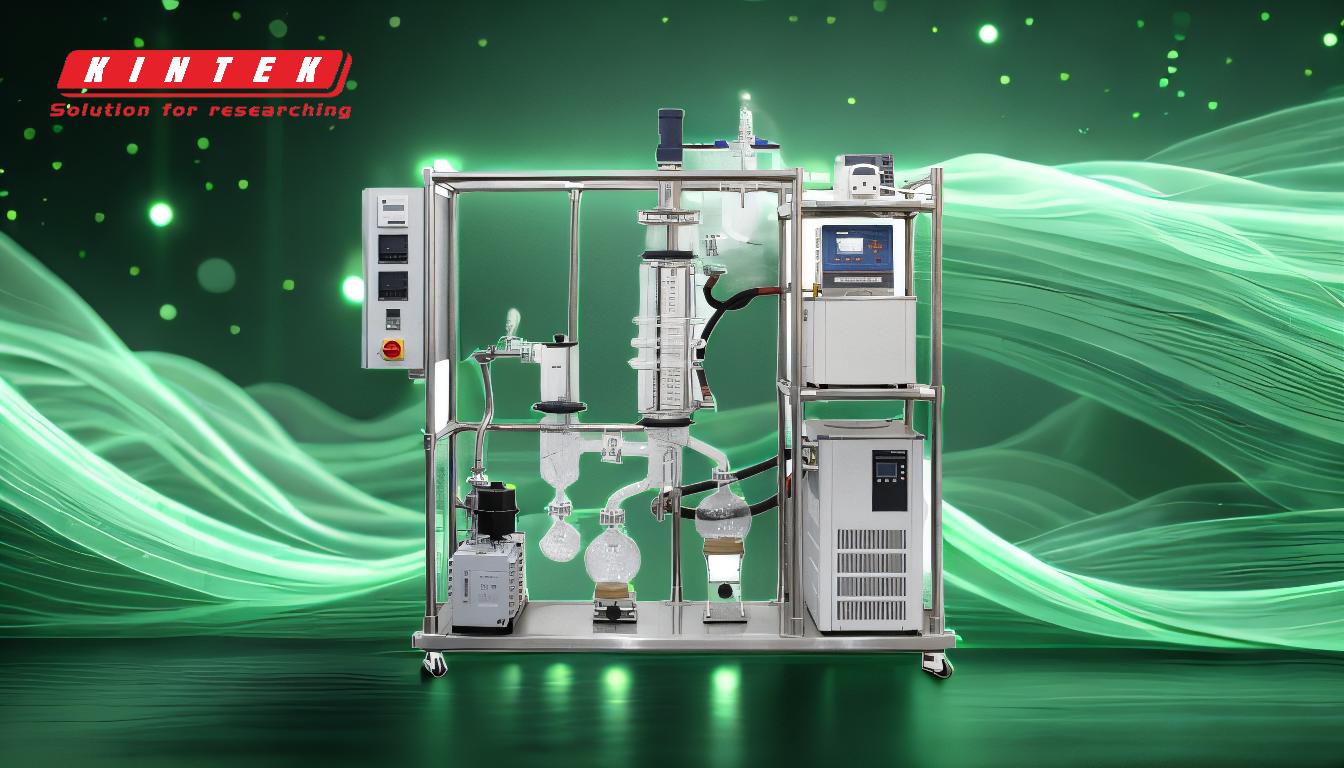To reduce pressure in a vacuum distillation system, such as a rotary evaporator, several methods can be employed depending on the level of control and precision required. The primary goal is to lower the boiling point of the solvent or product, enabling efficient distillation at lower temperatures. This is achieved by adjusting the vacuum level using manual, two-step (on/off), or adaptive control methods. Each method varies in complexity, precision, and suitability for different operational needs. Proper vacuum control ensures optimal separation, speed, and solvent recovery while preventing issues like thermal degradation or contamination.
Key Points Explained:

-
Understanding the Role of Vacuum in Distillation
- Vacuum pressure is critical in distillation as it lowers the boiling point of the solvent or product.
- A lower pressure allows for faster evaporation at a given temperature, reducing the risk of thermal degradation.
- The vacuum draws vapors from the evaporating flask into the condenser, where they are cooled and collected as distillate.
-
Methods to Reduce Pressure in Vacuum Distillation
-
Manual Control:
- Involves adjusting the vacuum level using a stopcock or manual valve.
- Requires continuous monitoring as the vacuum level can fluctuate during the process.
- Suitable for small-scale or less critical applications where precision is not a priority.
-
Two-Step (On/Off) Control:
- Allows the vacuum to cycle between high and low setpoints by turning the pump on and off.
- Once the limits are set, the system can operate unsupervised.
- Provides a balance between simplicity and control, making it suitable for routine applications.
-
Adaptive Control:
- Automatically adjusts the pump's rotational speed to match the process requirements.
- Ensures precise and continuous control of the vacuum level, avoiding pressure fluctuations.
- Ideal for sensitive processes where maintaining optimal conditions is critical, such as isolating delicate compounds like cannabinoids.
-
-
Optimizing Vacuum Control for Efficiency
-
Two-Point Control:
- A valve on the vacuum line adjusts based on a user-defined setpoint.
- The controller reads the actual process pressure and opens or closes the valve to maintain the desired vacuum level.
- Provides a stable vacuum environment, reducing the risk of process interruptions.
-
Speed-Controlled Adaptive Vacuum Control:
- Offers maximum precision by continuously tracking and adjusting to the optimum process condition.
- Prevents pressure fluctuations, ensuring consistent performance and high-quality distillate.
- Best suited for advanced applications requiring high accuracy and reliability.
-
-
Ensuring System Integrity for Effective Pressure Reduction
-
Airtightness:
- Check the joints, vacuum tubes, and glass bottles for leaks, as even minor leaks can reduce the vacuum degree.
- Proper sealing ensures consistent pressure levels and efficient operation.
-
Temperature and Pressure Balance:
- Maintain a balance between the vacuum level and the heating bath temperature to avoid thermal destruction or oxidation.
- Accurate control of both parameters ensures the desired product is isolated without degradation or contamination.
-
-
Practical Considerations for Vacuum Reduction
-
Process Requirements:
- Choose the vacuum control method based on the sensitivity of the product and the desired distillation speed.
- For example, adaptive control is ideal for isolating heat-sensitive compounds, while two-step control may suffice for routine solvent removal.
-
Operational Supervision:
- Manual control requires constant attention, while adaptive and two-step control allow for unsupervised operation after initial setup.
- Consider the level of supervision available when selecting a vacuum control method.
-
Cost and Complexity:
- Manual control is the simplest and least expensive but lacks precision.
- Adaptive control offers the highest precision but may require more advanced equipment and setup.
-
By carefully selecting and implementing the appropriate vacuum control method, you can effectively reduce pressure in a vacuum distillation system, ensuring optimal performance and high-quality results.
Summary Table:
| Method | Precision | Complexity | Best Use Case |
|---|---|---|---|
| Manual Control | Low | Low | Small-scale or less critical applications |
| Two-Step (On/Off) | Medium | Medium | Routine applications |
| Adaptive Control | High | High | Sensitive processes (e.g., cannabinoids) |
Need help optimizing your vacuum distillation system? Contact our experts today for tailored solutions!












